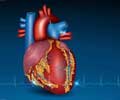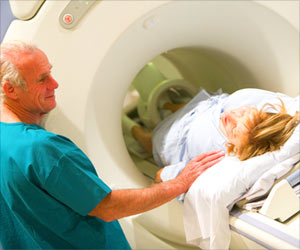- Ventricular tachycardia, a life-threatening irregular heart rhythm is now treated with noninvasive radiation therapy, a technique used typically to treat cancerous tumors.
- Since the radiation is targeted directly at the problem causing region, it significantly reduces the number of ventricular arrhythmia events
- Study is currently enrolling patients in a clinical trial to further evaluate radiation therapy as a therapeutic approach for tachycardia.
Ventricular tachycardia
Tachycardia is a condition when the heart rate exceeds the resting heart rate and beats over 100 beats per minute. It often develops after a heart attack. Tachycardia is estimated to cause 300,000 deaths per year in the U.S. alone and is the leading cause of sudden cardiac death. Standard treatment includes medications and an invasive procedure where a catheter is inserted through a vein into the heart where it selectively burns the tissue that causes the electrical circuits of the heart to misfire leading to arrhythmia. In patients with significantly high number of arrhythmia events, defibrillators are implanted to save their lives in the case of an arrhythmia. Phillip S. Cuculich, MD, an associate professor of medicine, cardiologist and first author said, "The device recognizes a dangerous arrhythmia and can deliver a life-saving electrical shock. While it’s wonderful that we can stop people from dying in that situation, the shock can be a traumatic event. Patients understand that they have just avoided death. And when this happens repetitively, often without warning, it can be devastating for patients."Study Overview
While there have been previous studies that reported treating ventricular tachycardia with radiation therapy, this is the first to do the same in a noninvasive manner.Participants: The study involved 5 individuals with ventricular tachycardia, four in their 60s and one over 80 years of age. All of them had either undergone catheter ablation procedures and their ventricular tachycardia had returned, or they were unable to go forward with the procedure due to other medical complications.
Collectively all patients had experienced over 6,500 episodes of ventricular arrhythmia a period of three months before being treated with radiation therapy.
Following radiation treatment, the number of arrhythmic episodes reduced drastically. During the first six weeks after therapy, the patients collectively experienced a total of 680 episodes. At the end of one year the collective number of episodes had decreased to four. Two patients didn’t experience any episodes at all.
How is the procedure done?
"A traditional catheter ablation procedure can take six hours or more and requires general anesthesia, Cuculich said. "This new process is entirely noninvasive. We take pictures of the heart with various imaging methods -- MRI, CT, PET scans. But the unique piece is the noninvasive electrical mapping called electrocardiographic imaging. This allows us to pinpoint where the arrhythmias are coming from. When we overlay the scar mapping with the electrical mapping, we get a beautiful model of heart function that lets us see not only where the arrhythmia comes from, but where it might progress."Based on these maps, Dr. Robinson is then able to deliver the energy entirely noninvasively," Cuculich added. "It’s simply amazing to see a ventricular tachycardia patient get an ablation therapy for a few minutes and then get up off the table and walk out the door."
Caution
However, it is too early to say if the therapy is completely safe. The team is still monitoring for long-term side effects of radiation therapy, such as lung scarring and additional damage to the heart itself. Currently the therapy is only being used for end stage patients who have no other options. Vigorous research and clinical trials are required to determine the safety of this procedure on younger and healthier patients.Reference:
- Phillip S. Cuculich, Matthew R. Schill, Rojano Kashani, Sasa Mutic, Adam Lang, Daniel Cooper, Mitchell Faddis, Marye Gleva, Amit Noheria, Timothy W. Smith, Dennis Hallahan,Yoram Rudy, Clifford G. Robinson. Noninvasive Cardiac Radiation for Ablation of Ventricular Tachycardia. The News England Journal of Medicine, (2017) DOI: 10.1056/NEJMoa1613773
Source-Medindia















